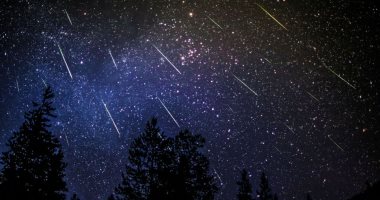Written by Mahmoud Ragheb Wednesday, December 13, 2023 11:32 AM The skies of Egypt and the Arab world are witnessing a peak of precipitation. Geminid meteors From midnight tomorrow, Thursday, December 14, and during the hours before sunrise on the morning of Friday, December 15, it is one of the most prominent annual meteor showers.
The Jeddah Astronomical Society revealed in a report that the year 2023 is considered ideal for Geminid meteors, given that the moon will be in the crescent phase at the beginning of the month and will set early at night, leaving the sky dark to see the falling meteors. The best time to observe them is around 3 a.m. when observing the northeastern horizon. With the naked eye from a dark place away from city lights.
The Geminid meteors will apparently launch from in front of the Geminid constellation near the star Castor, but the meteors can appear from anywhere in the sky when they burn at an altitude ranging between 70 and 100 kilometers.
The Geminids are active annually from December 7 to 17, and in ideal weather conditions and the absence of the moon, they produce, from a dark location, up to 120 meteors per hour at their peak, but the actual number may be less, between 40 and 60 meteors per hour, and this is left to field monitoring.
The sources of most meteor showers are usually comets, but the source of the Geminid meteors is the object – Phaethon 3200 – which is called a rocky comet.
A rocky comet is an asteroid that passes very close to the sun, and in the case of Phaethon 3200, it is at a distance of 20,943,702 kilometers – which is less than half the distance between Mercury and the sun – so that the heat of the sun makes it very hot, expels dust from its rocky surface, and lead can flow like water on it. Its surface.
It is believed that the object – Phaethon 3200 – may sometimes form a tail similar to the tail of a comet and scatter its material that falls in the form of Geminid meteors, and this is actually what was recorded when it approached the sun.
It is worth noting that Geminid meteors can produce very bright meteors called “light balls,” which are larger than normal meteors and have no effect on Earth.


